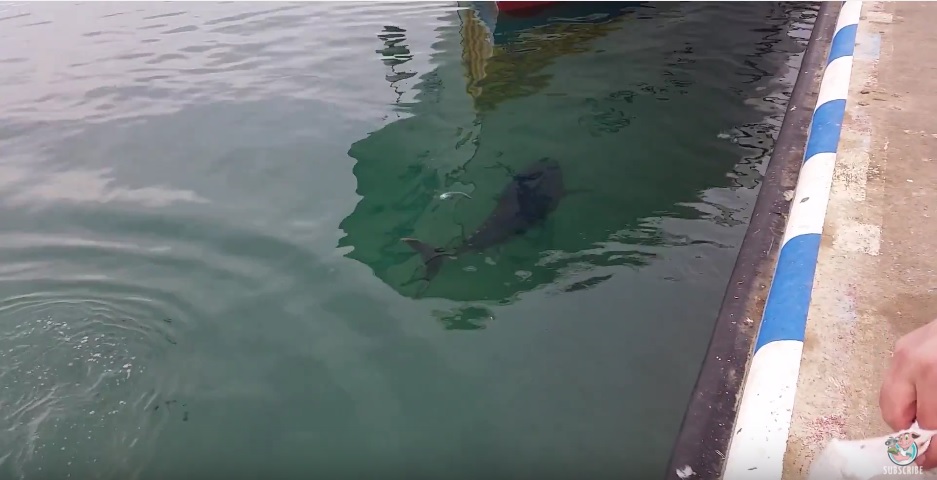Once again, the internet is in a fervour over a rarely documented, but pretty common, animal interaction. The video below shows fishermen at a pier in L’Escala, Spain tossing small fish to a tuna. A nearby seagull went for the same fish and was ingested by the tuna, much to everyone’s surprise. Naturally, the tuna spat out the seagull, luckily uninjured, and it flew away to dive another day:
Seabirds are often ingested by marine megafauna since both groups forage in the same areas, often on the exact same prey. This video was an artificial overlap of foraging animals created by the people tossing fish from the pier, but in natural settings where two animals feed on the same prey and one of those animals is considerably larger than the other, the smaller animal faces a pretty high risk of being swallowed.
This is especially true for lunge-feeding whales that take in large mouthfuls of fish, water, and anything else at the surface. Haynes et al. identified three Glaucous-winged gulls in the fecal remains of foraging humpback whales in Glacier Bay, Alaska. The birds were mostly intact, suggesting that humpback whales aren’t capable of digesting birds well (we’ve all been there).
All of the examples above are accidental ingestion, but some marine animals deliberately target birds for food, too. Tiger sharks seasonally aggregate at the Hawaiian Islands of French Frigate Shoals to forage on albatross fledglings. Fledglings are fat, slow, and naïve, making them easy and profitable prey. This foraging strategy is common among sharks and is the same reason white sharks target seal colonies during South African winters.
The alien giant catfish of the river Tarn in southwestern France is an aquatic example. They have also acquired a taste for feathered food and learned to ambush aloof pigeons, with a success rate of 28%:
https://www.youtube.com/watch?v=pwlJO789k-A
Although not mega- megafauna, the Hilaire’s Side-necked turtles of Brazil have been documented consuming pigeons in a scene that honestly rivals Jaws. Who’s slow now? (Edit: Thanks to @mattkeevil for the reference!)
Marine and aquatic animals do indeed eat birds, accidentally and deliberately. Exactly how regularly this happens is unknown, but this antipodean pairing is essentially the chocolate shake and fries of the natural world. The bottom line is, if you are in the same space where something bigger than you is foraging, you might get swallowed. Birds, and humans, alike:

Perhaps even more remarkable are records of goosefish and octopuses preying on seabirds. There are also records of sea anemones eating birds, though those may have been scavenged.
Yes! I have also seen waders become trapped and drowned by large cockles. Although the birds obviously are not consumed by the cockles, it’s definite a case of kill or be killed!